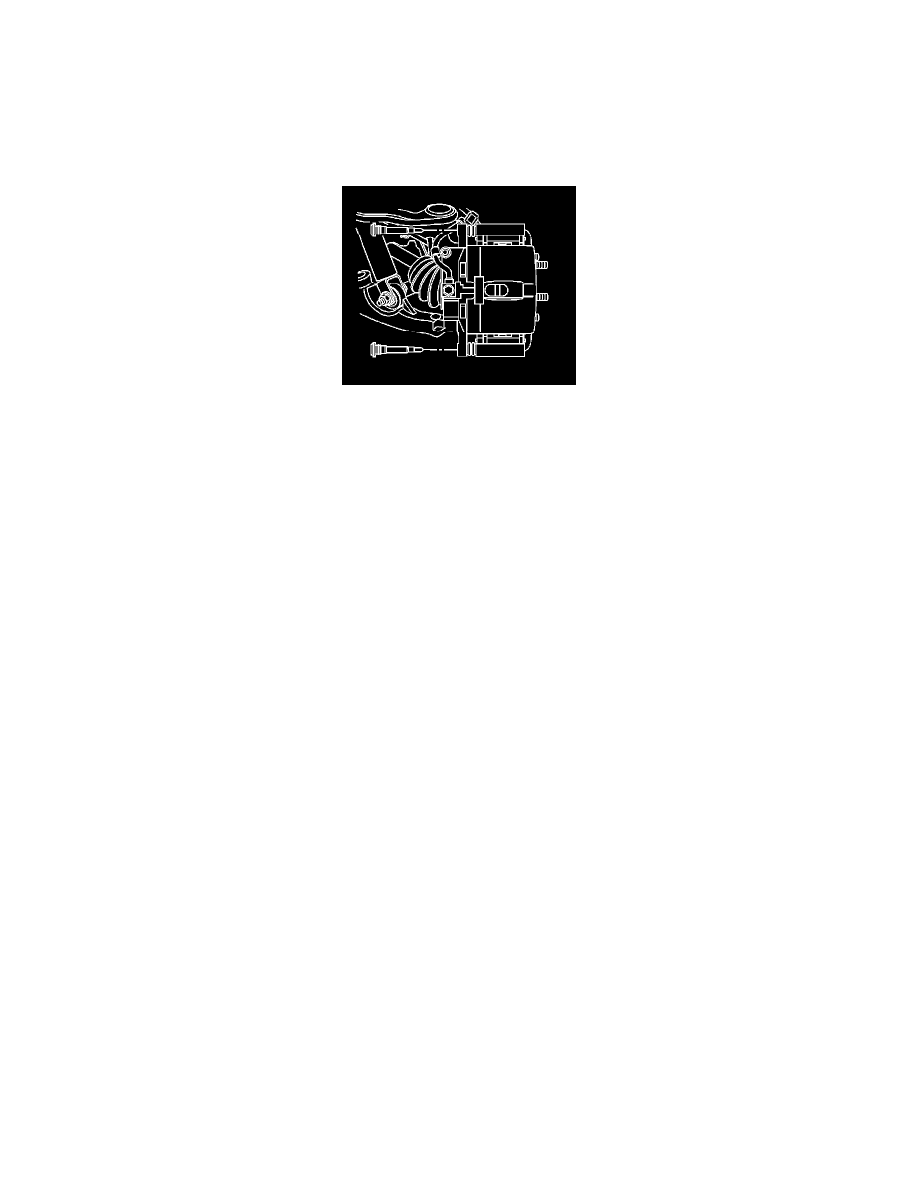Escalade ESV RWD V8-6.2L (2010)

11. Remove and discard the brake pad retaining springs.
12. Inspect the brake caliper. Refer to Brake Caliper Inspection (See: Brake Caliper/Testing and Inspection).
Installation Procedure
1. Install NEW brake pad retaining springs to the caliper bracket.
2. Install the disc brake pads to the brake caliper bracket, positioning the brake pad wear sensor (if equipped) as noted during removal.
3. Install the brake caliper to the caliper bracket.
Caution: Refer to Fastener Caution (See: Service Precautions/Vehicle Damage Warnings/Fastener Caution).
4. Install the brake caliper guide pin bolts and tighten to 108 Nm (80 lb ft).
5. Install the tire and wheel assembly. Refer to Tire and Wheel Removal and Installation (See: Maintenance/Wheels and Tires/Service and Repair).
6. Lower the vehicle.
7. With the engine OFF, gradually apply the brake pedal to approximately 2/3 of its travel distance.
8. Slowly release the brake pedal.
9. Wait 15 seconds, then repeat steps 7-8 until a firm brake pedal is obtained, to properly seat the brake caliper pistons and brake pads.
10. Fill the brake master cylinder reservoir to the proper level with clean brake fluid, if necessary. Refer to Master Cylinder Reservoir Filling (See:
Hydraulic System/Brake Master Cylinder/Service and Repair/Procedures/Master Cylinder Reservoir Filling).
11. Burnish the brake pads and discs. Refer to Brake Pad and Rotor Burnishing (See: Procedures).
Front Disc Brake Pads Replacement (1500 Series)
Front Disc Brake Pads Replacement (1500 Series)
Warning: Refer to Brake Dust Warning (See: Service Precautions/Technician Safety Information/Brake Dust Warning).
Removal Procedure
1. Inspect the fluid level in the brake master cylinder reservoir.
2. If the fluid level is midway between the maximum-full point and the minimum allowable level, no fluid needs to be removed from the reservoir
before proceeding.
3. If the fluid level is higher than midway between the maximum-full point and the minimum allowable level, remove fluid to the midway point
before proceeding.
4. Raise and support the vehicle. Refer to Lifting and Jacking the Vehicle (See: Maintenance/Vehicle Lifting/Service and Repair).
5. Remove the tire and wheel assembly. Refer to Tire and Wheel Removal and Installation (See: Maintenance/Wheels and Tires/Service and Repair
).
